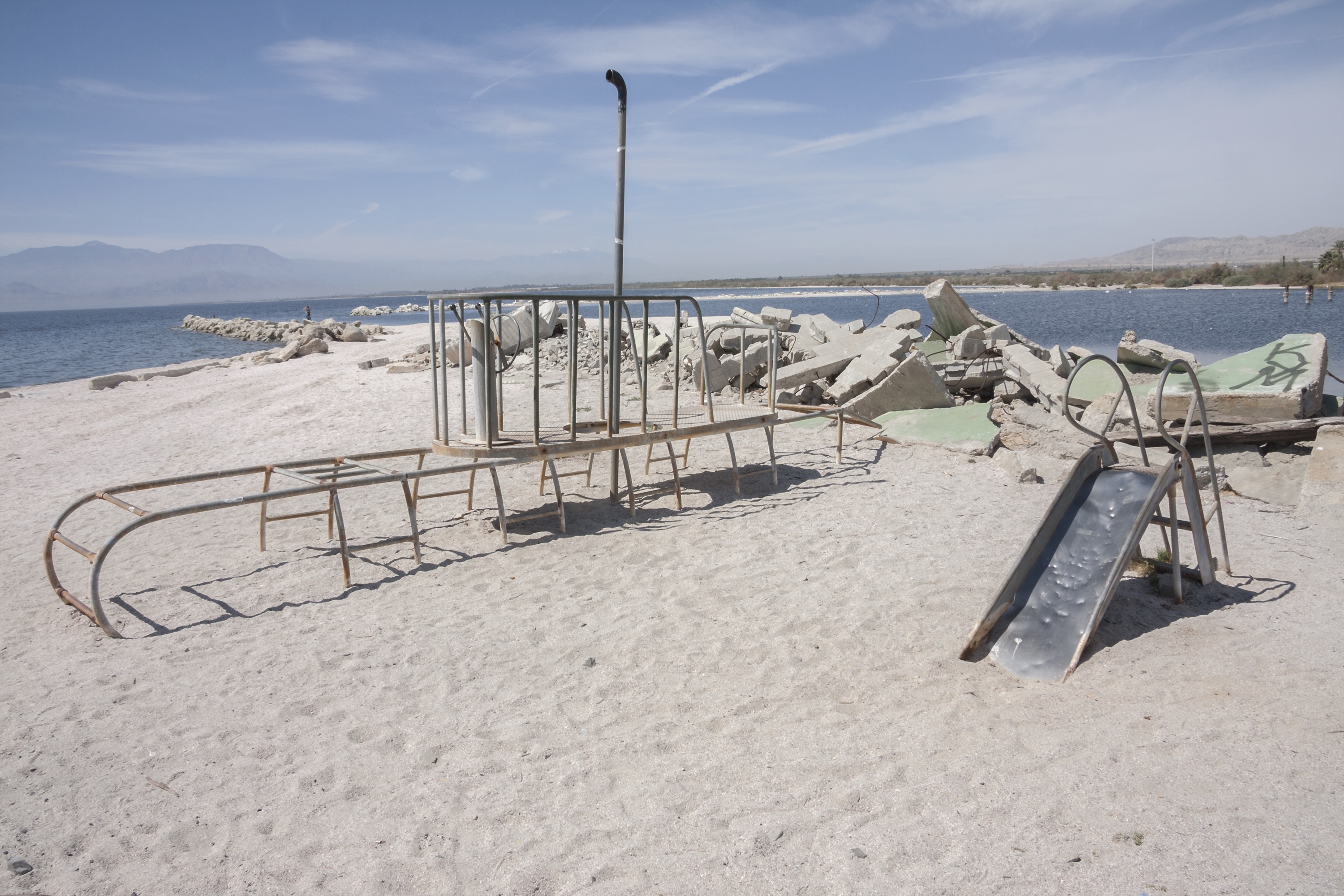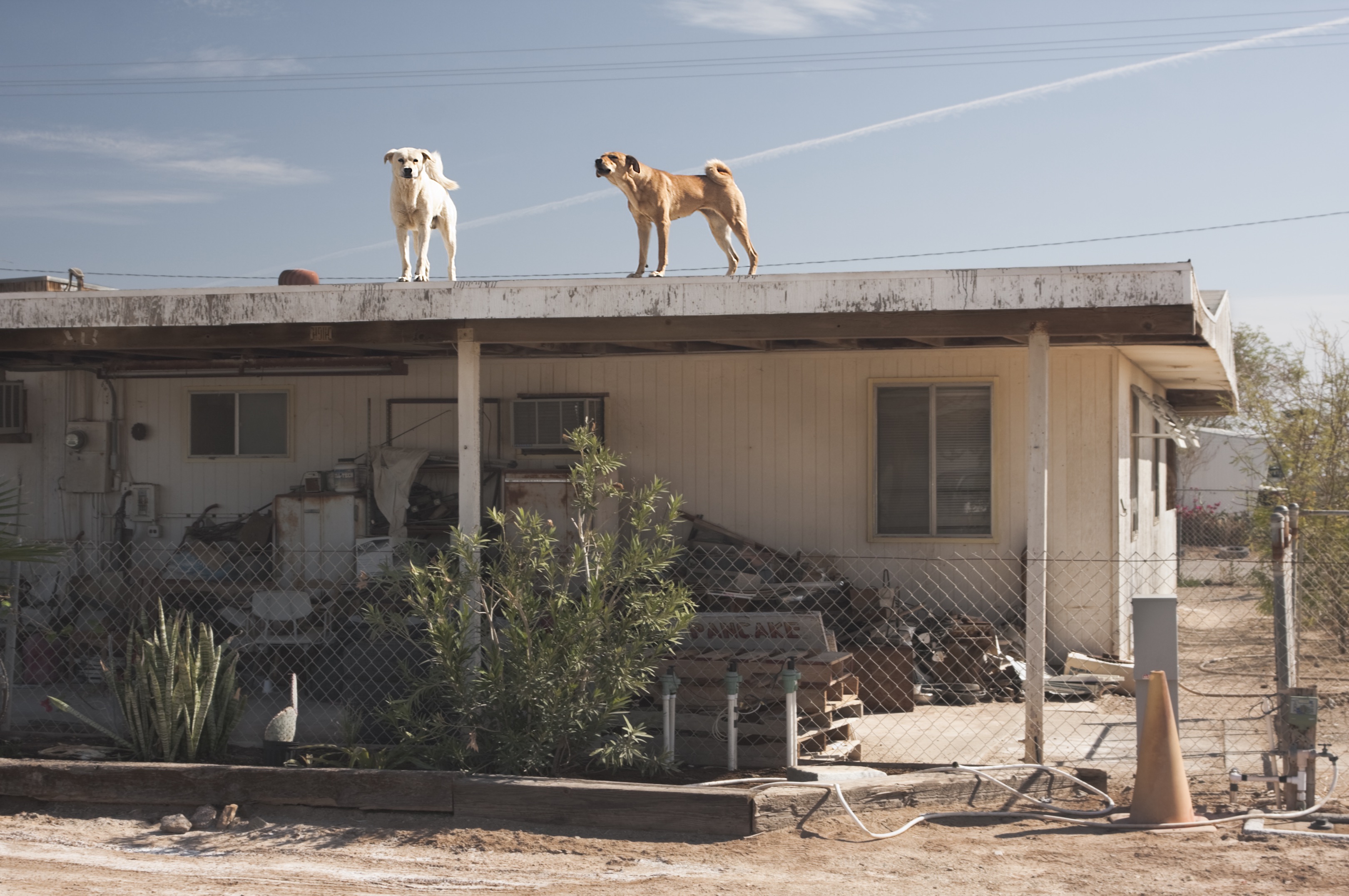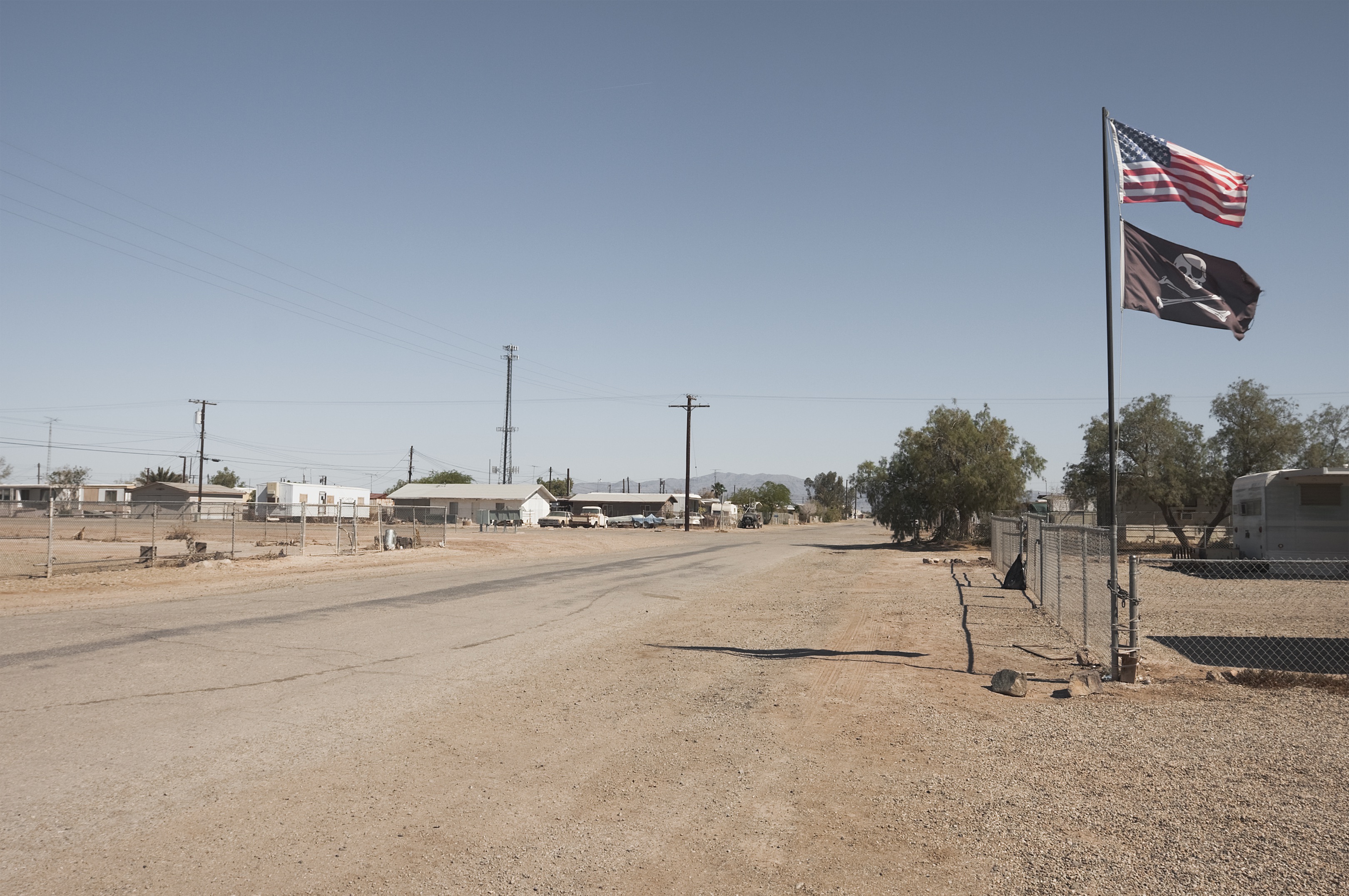Forty miles south of the Palm Springs resort area lies one of the largest ecological disasters in American history.
The Salton Sea was created in 1905 after the an engineering blunder allowed the Colorado river to burst through poorly designed irrigation controls, flooding communities, farms, and the main line of the Southern Pacific Railroad for over two years.
Originally marketed as a fishing and boating playground for overheated Californians, the artificially created body of water was a popular vacation destination from the early 1900s through the 1960s. Since then salt levels have concentrated in the landlocked sea, forcing oxygen out of the water and causing the die-off of millions of fish each year. The ones that survive are hazardous to consume due to high levels of selenium and other toxins from pesticide runoff.
Once the water became poisonous the once thriving recreation area became a series of ghost towns. Property values plummeted, and abandoned sites began to rot along the sea shores.

(Photo: Boyz Bieber)
Bombay Beach is located on the eastern shore of the sea, just off Highway 111. At 233 feet below sea level, it is considered the lowest community in the United States. There are 178 households, two convenient stores, and one bar. There are two dogs for every person and a golf cart in every driveway.

(Photo: Boyz Bieber)
The landscape is barren, but the shrinking population is still full of life for now. An estimated one million people visit the Salton Sea each year but the non-profit Pacific Institute estimates that, without intervention, the surface area of the lake will shrink to 100 square miles by 2030, the salinity level will triple, and the fish will disappear within the next decade. For a place that’s been left with next to nothing, there will be even less.

(Photo: Boyz Bieber)
Various measures to preserve and revitalize the Salton Sea area, and address the impact of toxic dust clouds due to water evaporation, have failed. An Obama-era agreement to secure the viability of the Salton Sea and focus on geothermal energy development in the area has stalled under the new administration. Local residents have stepped in to form grassroots efforts to re-develop the areas’ wetlands, but even that may be too late. And a new farm-to-city water deal will divert the majority of the water that currently sustains the area away to other cities.
In the interim, Salton Sea’s residents sit and wait. For what, they’re still figuring out. Below, in their own words, is a snapshot of life in this place:
—











